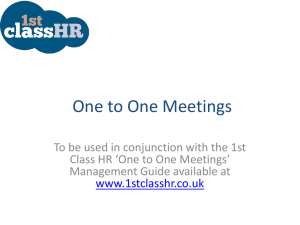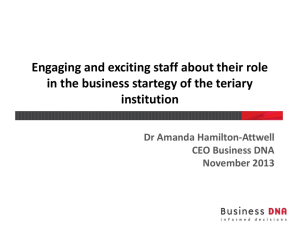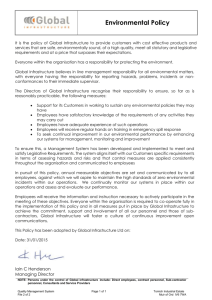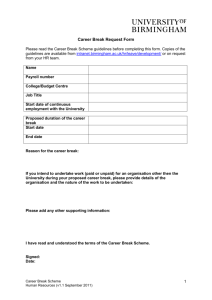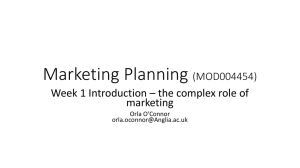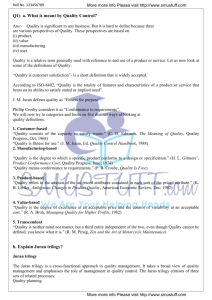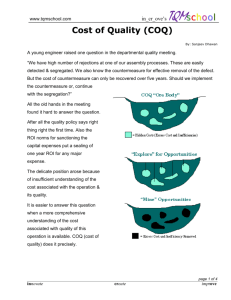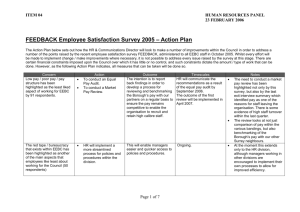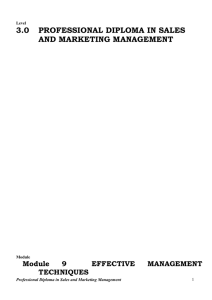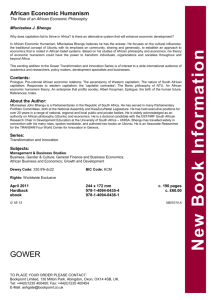This management guide discusses how an effective
advertisement
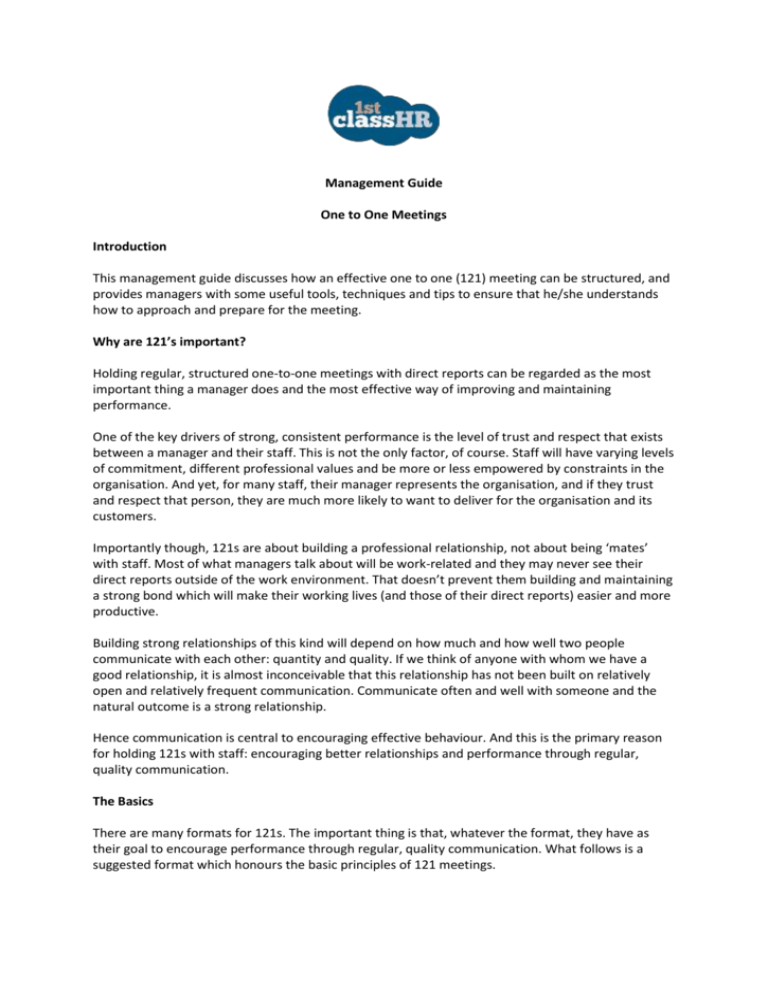
Management Guide One to One Meetings Introduction This management guide discusses how an effective one to one (121) meeting can be structured, and provides managers with some useful tools, techniques and tips to ensure that he/she understands how to approach and prepare for the meeting. Why are 121’s important? Holding regular, structured one-to-one meetings with direct reports can be regarded as the most important thing a manager does and the most effective way of improving and maintaining performance. One of the key drivers of strong, consistent performance is the level of trust and respect that exists between a manager and their staff. This is not the only factor, of course. Staff will have varying levels of commitment, different professional values and be more or less empowered by constraints in the organisation. And yet, for many staff, their manager represents the organisation, and if they trust and respect that person, they are much more likely to want to deliver for the organisation and its customers. Importantly though, 121s are about building a professional relationship, not about being ‘mates’ with staff. Most of what managers talk about will be work-related and they may never see their direct reports outside of the work environment. That doesn’t prevent them building and maintaining a strong bond which will make their working lives (and those of their direct reports) easier and more productive. Building strong relationships of this kind will depend on how much and how well two people communicate with each other: quantity and quality. If we think of anyone with whom we have a good relationship, it is almost inconceivable that this relationship has not been built on relatively open and relatively frequent communication. Communicate often and well with someone and the natural outcome is a strong relationship. Hence communication is central to encouraging effective behaviour. And this is the primary reason for holding 121s with staff: encouraging better relationships and performance through regular, quality communication. The Basics There are many formats for 121s. The important thing is that, whatever the format, they have as their goal to encourage performance through regular, quality communication. What follows is a suggested format which honours the basic principles of 121 meetings. The ‘WASP’ model This useful model often helps managers to remember the key elements of an effective 121 meeting. • • • • Welcome – put your team member at ease Acquire – review current performance, give recognition of achievements and success Supply – set revised standards and deadlines for objectives Part – summarise main points and review plans made 121 Format Regularity Meet at least once per month, or even more frequently if necessary. The regularity of meetings can be adapted to suit the needs of the organisation, the manager and most importantly the employee. Timings Meet for approximately 30 minutes, but adapt the timeframe to suit the discussion. Sometimes ten minutes may be sufficient, and occasionally more time may be required. Be careful that 121 meetings do not turn into lengthy and unnecessary discussions. Environment Meet in a quiet and appropriate environment, such as an office meeting room. Avoid any environment where the discussion could be overheard. No Interruptions Switch off phones and don’t allow any interruptions or distractions of any kind, unless there is an emergency situation. It is important that employees feel that they have your undivided attention, and that you have theirs. Listen This is not the time to disseminate information, but to allow the employee to talk to you about their thoughts, feelings, actions or concerns. The agenda can be quite general, at least for the first part of the meeting, to encourage the employee to talk to you openly and honestly about whatever it is that is on their mind. Managers cannot help individuals if they are not prepared to listen, or if they are simply waiting for the employee to stop talking so that they can put across their point of view. Coach Adopting a coaching style to supporting and providing feedback to staff. This means asking questions and providing opportunities for the employee to find answers from within themselves. Record Take notes, this is a professional meeting rather than a chat. 121 meetings may form part of a wider performance management / appraisal process, and notes can be used to draw conclusions and/or provide evidence for appraisal scores at the end of a performance year. 121 Agenda In practice the agenda needs to be flexible, but generally the first 15 minutes should be set aside for the employee to talk about whatever they wish. During this time the manager should focus on the employee’s interests. The following 15 minutes can be used to: follow up on actions agreed at the previous meeting; discuss progress and status of key projects or tasks; provide feedback; discuss any new projects or tasks that will help the employee to improve their performance; decide upon actions for the next meeting. You may find it helpful to ask the employee to prepare for the meeting by compiling some notes on the following: 1. Accomplishments & Status – bring a list of all current projects, with one or two sentences describing progress and status of each 2. Blocked/Waiting on – note any roadblocks that are currently keeping projects from progressing 3. To do – make a high-level to-do list of what you would like to accomplish in the next week/month 4. Areas to develop – note areas of personal and professional development and what activities you have undertaken/would like to undertake to develop in those areas 5. Objectives – review your monthly, quarterly or yearly objectives and note what progress you have made 6. Action Plans – record the results of previously established action plans What if… An employee refuses to meet? An employee does not talk a lot or open up? An employee dislikes that fact that I make notes? Remember… If employees are not used to regular and open communication in this way, they may feel unsure about 121 meetings to start with. The best approach is to demonstrate through the first few meetings that the discussions can be helpful and useful to them. Try asking them open questions like… “What would you like to talk about today?” or “What’s on your agenda?” or “Is there anything I can help you with?” and be prepared to listen. Explain the performance management process and the rationale for the meeting, i.e. to communicate effectively and to promote strong working relationships with a view to increasing performance, for the benefit of the employee and the organisation.
